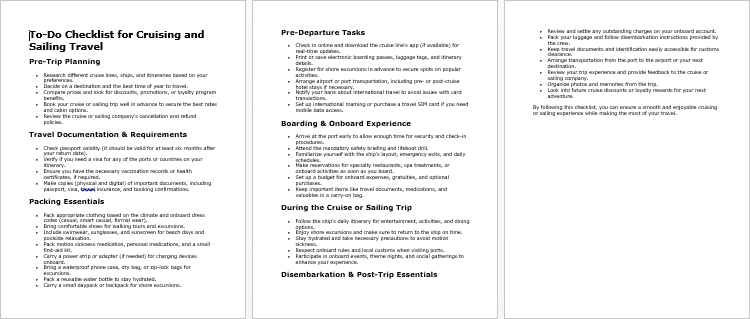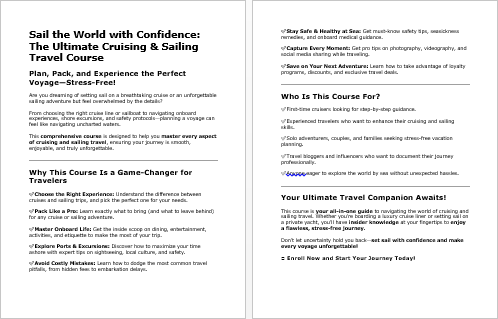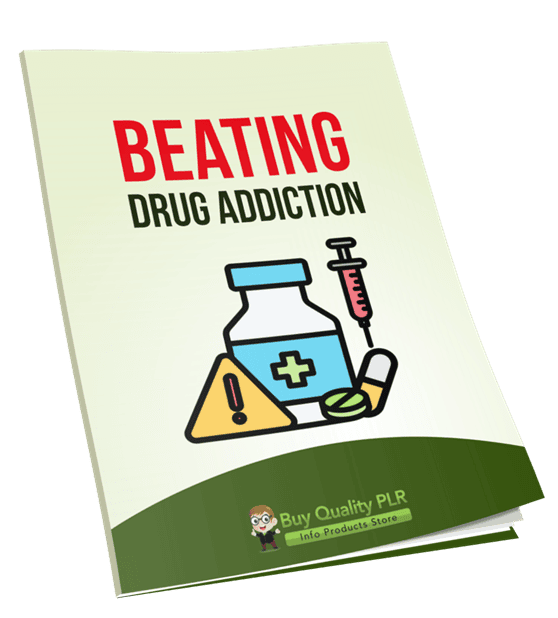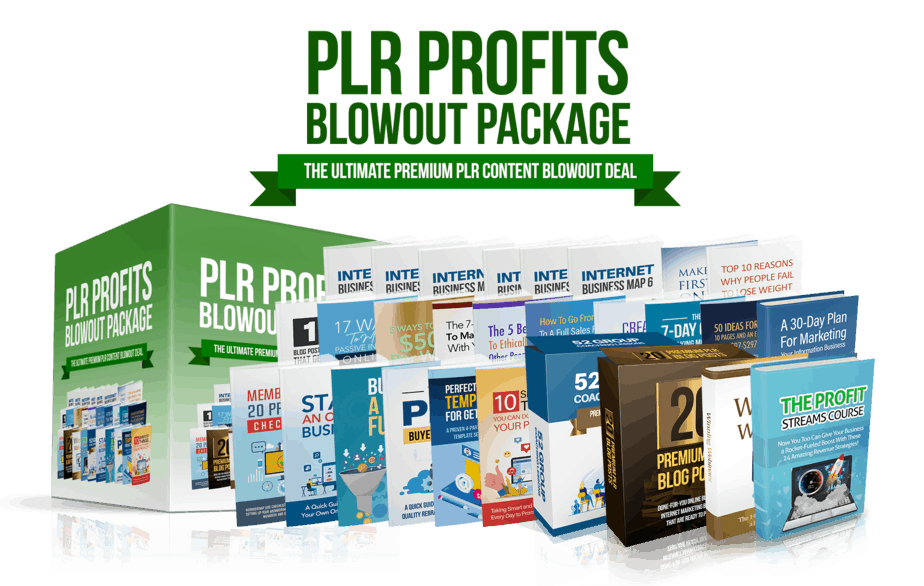
Cruising and Sailing Travel PLR Course 20k Words
in PLR Checklists , PLR eBooks , PLR eCourses , PLR List Building Reports , Premium PLR , Premium PLR eBooks , Premium PLR Reports , Premium White Label Brandable PLR Coaching Courses , Private Label Rights Products , Travel PLR , Travel PLR eBooksChoose Your Desired Option(s)
has been added to your cart!
have been added to your cart!
#cruisetravel #sailinglifestyle #travelplrcourse #cruisingcontent #sailingtips #plrtravel #travelbloggers #cruiseguide #sailingadventure
Cruising and Sailing Travel PLR Course: Unlock the Ultimate Guide to Planning and Enjoying Cruises & Sailing Adventures
Are you ready to capitalize on the booming travel industry? Introducing the Cruising and Sailing Travel PLR Course—a comprehensive, step-by-step guide that provides your audience with everything they need to know about cruising and sailing trips. With 18,734 words packed into five detailed modules, this PLR course is designed to transform your customers into knowledgeable travelers, ready to explore the world by sea. Whether you’re looking to sell the course as a digital product or use it as part of your content marketing strategy, this course offers tremendous profit potential.
The course is fully customizable, easy to sell, and packed with high-quality content that can help boost your brand’s credibility and profitability. Let’s dive into the key features and benefits of this Cruising and Sailing Travel PLR Course.
Presenting…
Cruising and Sailing Travel PLR Course 20k Words
Course Overview: What’s Included in the Cruising and Sailing Travel PLR Course
This PLR course comes with everything you need to educate and inspire travelers who are eager to embark on a cruise or sailing adventure. It’s organized into five comprehensive modules, each designed to guide learners step-by-step through the entire process—from planning their trip to enjoying life onboard and even planning future sailing and cruising journeys.
Here’s an outline of what’s inside the course:
Module 1: Introduction to Cruising and Sailing
In this module, we cover the basics, helping beginners understand the difference between cruising and sailing while laying the groundwork for the entire journey.
- Step 1: Understanding the Difference Between Cruising & Sailing
- Step 2: Choosing the Right Type of Cruise or Sailboat
- Step 3: Setting Your Budget & Booking the Right Trip
- Step 4: Understanding Travel Documents & Requirements
Module 2: Planning Your Cruise or Sailing Trip
Once learners are ready to plan their trip, this module provides them with detailed strategies for selecting destinations, picking the right company, and packing effectively.
- Step 1: Picking the Best Destination & Season
- Step 2: Selecting the Best Cruise Line or Charter Company
- Step 3: Packing Smart for Your Trip
- Step 4: Preparing for Life Onboard
Module 3: Onboard Experience & Activities
This module guides travelers through the cruise or sailing experience—from navigating the ship to enjoying onboard dining and activities.
- Step 1: Navigating Your Cruise Ship or Sailboat
- Step 2: Enjoying Onboard Dining & Entertainment
- Step 3: Exploring Ports & Shore Excursions
- Step 4: Staying Safe & Healthy Onboard
Module 4: Sailing & Cruising Like a Pro
This module covers tips and best practices to make every cruise and sailing experience smooth, stress-free, and enjoyable.
- Step 1: Mastering Cruise & Sailing Etiquette
- Step 2: Avoiding Common Mistakes & Travel Hassles
- Step 3: Making the Most of Sea Days
- Step 4: Capturing Memories & Staying Connected
Module 5: Returning & Planning Your Next Trip
After returning from their voyage, this module helps learners reflect on their journey and plan their next adventure.
- Step 1: Disembarkation & Post-Trip Essentials
- Step 2: Reviewing & Reflecting on Your Experience
- Step 3: Planning Your Next Adventure
- Step 4: Staying in the Cruising & Sailing Community
Bonus Materials Included: Value-Added Resources
In addition to the in-depth course content, we’ve included several valuable bonus materials to enhance the learning experience and provide even more value to your customers:
- Cruising and Sailing Travel – Checklist (542 words): A handy checklist to keep travelers organized and prepared for their cruise or sailing adventure.
- Cruising and Sailing Travel – FAQs (1,154 words): A comprehensive set of frequently asked questions to address common traveler concerns.
- Cruising and Sailing Travel – Salespage (383 words): A professionally crafted sales page that can be used to promote the course and drive conversions.
How to Profit from the Cruising and Sailing Travel PLR Course
With the Cruising and Sailing Travel PLR Course, you have endless possibilities for monetization. Whether you’re a seasoned entrepreneur or just starting out, this course can be a key asset in your digital product portfolio. Here are some ways you can profit from this PLR course:
- Sell It as a Standalone Product: You can sell this course directly on your website, in online marketplaces like Etsy or Udemy, or through your own eCommerce platform for a competitive price range of $47–$97.
- Break It Into Smaller Pieces: Excerpt sections of the course (such as individual modules or steps) and sell them as separate, more affordable products for $10-$20 each. This strategy allows you to attract a broader audience.
- Bundle with Other Related Products: Pair this PLR course with other travel-related products, such as PLR ebooks, checklists, or sales funnels, and sell the bundle for a higher price point (e.g., $97-$147).
- Create a Membership Site: Offer the Cruising and Sailing Travel PLR Course as part of a membership site where members can access the course and additional content for a recurring fee (monthly or yearly).
- Convert to an eClass: Turn the content into a multi-week eClass and sell access for $297-$497. This format works well for those looking for a more structured, in-depth learning experience.
- Repurpose Into Video or Audio Content: Convert the course material into video lessons or audio files, creating an entirely new format for your audience to consume, thus increasing its appeal.
- Use as a Lead Magnet: Offer sections of the course as a freebie or lead magnet to grow your email list. This will help you build an engaged audience for your future offerings.
- Create a Physical Product: You can take the content from the course, adapt it into a physical guidebook, and sell it for premium prices.
What You Can Do With This PLR Course
Permissions – What Can You Do With These Materials?
- You can sell the content with minor tweaks to make it your own.
- Break up the content into smaller reports and sell them individually.
- Bundle it with other content to create a larger product.
- Set up a membership site and generate recurring revenue.
- Convert it into an eclass and charge for access.
- Repurpose the course into videos, audios, or even physical products.
Restrictions – What Can’t You Do With These Materials?
- You cannot pass on the rights (PLR or resell rights) to your customers.
- You cannot offer 100% affiliate commissions.
- You cannot give away the content for free in its current form. It must be sold or excerpted/edited to be offered for free.
Why Choose the Cruising and Sailing Travel PLR Course?
- Comprehensive & In-Depth: This course covers every aspect of cruising and sailing travel, from choosing the right ship to handling post-trip details.
- Easy to Customize: The course is fully customizable, allowing you to rebrand it, tweak the content, and make it your own.
- High Profit Potential: With multiple monetization strategies available, you can turn this course into a consistent revenue stream.
- Professional, Ready-to-Sell Content: With all the work done for you, including a sales page, checklist, and FAQs, you’re ready to start selling right away.
Get Started Today and Set Sail on Your Profitable Travel Business!
Don’t miss out on this incredible opportunity to profit from the Cruising and Sailing Travel PLR Course. With high-quality content, easy customization, and multiple ways to profit, this is the ultimate course for anyone in the travel niche. Get started today and turn your travel business into a money-making machine!
has been added to your cart!
have been added to your cart!
Here A Sample of Cruising and Sailing Travel PLR Course
Module 1: Introduction to Cruising and Sailing
Before you set sail, let’s cover the basics!
Step 1: Understanding the Difference Between Cruising & Sailing
When planning a trip at sea, one of the first decisions you need to make is whether to go on a luxury cruise vacation or an adventurous sailing trip. While both experiences involve traveling over water, they differ significantly in terms of comfort, cost, itinerary flexibility, and overall experience.
This step will help you understand the key differences between these two options so you can choose the one that best aligns with your travel style, budget, and expectations.
1. What is a Luxury Cruise Vacation?
A luxury cruise vacation typically takes place on a large cruise ship operated by a major cruise line. These ships are designed to provide a resort-style experience on the water, complete with entertainment, fine dining, and various onboard activities.
Key Features of a Luxury Cruise:
- Size and Capacity: Most cruise ships are massive, carrying thousands of passengers across multiple decks. They feature cabins ranging from budget-friendly interior rooms to extravagant suites with private balconies.
- Destinations and Routes: Cruises operate on pre-planned itineraries with scheduled stops at different ports. Passengers explore destinations during shore excursions before returning to the ship.
- All-Inclusive Experience: Most cruises include accommodation, meals, entertainment, and basic activities. However, specialty dining, excursions, and some onboard amenities may come at an extra cost.
- Entertainment and Amenities: Cruise ships offer a variety of entertainment options, including theaters, casinos, pools, spas, gyms, shopping centers, and even amusement parks on premium liners.
- Crew and Service: A professional crew, including hospitality staff, chefs, and activity coordinators, ensures guests enjoy a comfortable and stress-free journey.
- Fixed Schedule: Cruises follow a structured itinerary with scheduled port visits and departure times. Passengers must adhere to embarkation and disembarkation guidelines.
- Target Travelers: Cruises attract families, honeymooners, retirees, and travelers looking for relaxation and entertainment without the hassle of independent trip planning.
2. What is an Adventurous Sailing Trip?
A sailing trip offers a more intimate and hands-on experience at sea, often on a sailboat, catamaran, or yacht. Unlike cruise ships, sailboats are smaller, and travelers actively participate in the journey, either by assisting with sailing or enjoying a more personalized voyage.
Key Features of a Sailing Trip:
- Size and Capacity: Sailing vessels are much smaller than cruise ships, typically accommodating between 2 and 20 passengers. Some trips are private charters, while others involve small group tours.
- Flexible Itineraries: Sailing offers greater freedom, allowing travelers to explore hidden coves, remote islands, and less touristy destinations. The itinerary can often be adjusted based on weather conditions and passenger preferences.
- Hands-On Experience: Passengers can participate in sailing by hoisting sails, navigating, and learning about maritime skills. Alternatively, they can relax while a professional skipper and crew handle operations.
- Closer Connection to Nature: Sailing provides a raw and immersive experience, with direct access to marine life, snorkeling spots, and secluded beaches. There are fewer crowds and a greater sense of adventure.
- Limited Amenities: Unlike cruise ships, sailboats have basic accommodations, shared spaces, and minimal entertainment. Some luxury charters offer comfortable cabins, but they are not comparable to cruise ship suites.
- Personalized Service: Since the crew is smaller, the service is more intimate, often including a captain and a cook. Meals are usually prepared with fresh, local ingredients.
- Target Travelers: Sailing trips appeal to adventure seekers, nature lovers, and those who prefer a more private and exclusive experience. It’s also a great choice for couples, groups of friends, or families looking for a unique getaway.
3. Comparing Budget and Costs
Luxury Cruise:
- Cruises range from budget-friendly options to ultra-luxury experiences.
- Base fares often include accommodation, food, and entertainment, but additional costs apply for specialty dining, excursions, spa treatments, and gratuities.
- Discounts are available for early bookings, off-season travel, and loyalty programs.
Sailing Trip:
- Costs vary based on the type of sailboat, duration, destination, and whether the trip is private or shared.
- Private yacht charters can be expensive, but shared sailing experiences are often comparable to mid-range cruise fares.
- Additional costs may include fuel, port fees, crew services, and food provisions.
4. Choosing the Best Option for Your Travel Style
If you prefer a structured vacation with plenty of entertainment, gourmet dining, and luxury amenities, a cruise is the ideal choice. It allows you to visit multiple destinations without worrying about logistics, making it a stress-free way to travel.
If you seek adventure, freedom, and a more intimate experience with nature, a sailing trip is the better option. Sailing allows you to explore at your own pace, discover hidden spots, and engage with the sea in a way that a large cruise ship cannot offer.
Before making a decision, consider your comfort preferences, desired level of adventure, and budget. Whether you choose cruising or sailing, both experiences offer unique ways to explore the world from the water.
Step 2: Choosing the Right Type of Cruise or Sailboat
Once you’ve decided whether you want to go on a luxury cruise or an adventurous sailing trip, the next step is choosing the right type of vessel. Different ships and boats offer varying levels of comfort, experience, and accessibility, depending on your travel style and destination.
This step will guide you through the different types of cruise ships and sailboats so you can select the best option for your journey.
1. Types of Cruise Ships
Cruise ships come in many sizes and styles, each designed for different types of travelers. Whether you want a large-scale resort experience, an intimate river journey, or an expedition to remote destinations, there is a cruise ship suited for your needs.
A. Ocean Liners (Large Cruise Ships)
- Size and Features: These are the largest cruise ships, often carrying 2,000 to 6,000 passengers. They resemble floating cities with multiple decks, luxurious accommodations, and endless amenities.
- Destinations: Designed for long-distance travel across oceans, they typically operate on popular routes such as the Caribbean, Mediterranean, and Alaska.
- Experience: Expect world-class entertainment, fine dining, casinos, nightclubs, shopping centers, pools, and spa facilities.
- Best For: Travelers who enjoy a structured itinerary, families, couples, and those who prefer an all-inclusive, entertainment-rich experience.
B. River Cruise Ships
- Size and Features: Smaller than ocean liners, carrying 100 to 300 passengers. They focus on scenic travel along rivers, with a more intimate atmosphere.
- Destinations: Common routes include the Danube, Rhine, Seine, Mekong, and Nile rivers. These cruises allow passengers to visit historic towns, vineyards, and cultural landmarks.
- Experience: The pace is relaxed, with guided tours, cultural activities, and onboard lectures. Cabins are comfortable but not as spacious as those on ocean liners.
- Best For: Travelers who enjoy history, culture, and sightseeing rather than onboard entertainment. Perfect for older travelers or those who prefer a quiet, elegant experience.
C. Expedition Cruise Ships
- Size and Features: Smaller than typical cruise ships, carrying 50 to 500 passengers. Built for adventure and exploration, they have reinforced hulls for navigating icy waters and rough seas.
- Destinations: Popular for exploring remote areas like Antarctica, the Arctic, the Galápagos Islands, and the Amazon Rainforest.
- Experience: These cruises focus on wildlife, nature, and active excursions such as kayaking, hiking, and snorkeling. There are onboard naturalists and scientists providing educational sessions.
- Best For: Adventure seekers, wildlife enthusiasts, and travelers who prefer small-group, off-the-beaten-path experiences over luxury and entertainment.
2. Types of Sailboats
If you’re opting for a sailing adventure, choosing the right type of boat is crucial for ensuring comfort, stability, and the experience you want. Sailboats vary in size, speed, and design, influencing how they handle different water conditions and the level of privacy you’ll have.
A. Catamarans
- Design: These boats have two parallel hulls, offering more stability and space than traditional monohull sailboats.
- Comfort Level: Cabins are spacious, with more room for lounging and sunbathing. They also have larger bathrooms and kitchens than monohulls.
- Experience: Catamarans are perfect for island-hopping and smooth sailing in calm waters. They are popular in the Caribbean, the Maldives, and the Greek Islands.
- Best For: Travelers prone to seasickness, families, groups of friends, and those who want a comfortable and stable sailing experience.
B. Yachts (Luxury Motor or Sailing Yachts)
- Design: Yachts come in two main types – motor yachts (powered by engines) and sailing yachts (powered by sails but often with backup motors). They are designed for luxury, comfort, and privacy.
- Comfort Level: Yachts offer high-end amenities, including private cabins, gourmet dining, and even onboard chefs and crew members.
- Experience: Travelers can enjoy personalized itineraries, private beach access, and exclusive experiences. Yachts are common in the French Riviera, the Amalfi Coast, and the Bahamas.
- Best For: Luxury travelers, honeymooners, and those who want an exclusive, private experience with full crew service.
C. Monohulls (Traditional Sailboats)
- Design: The classic single-hull sailboat is sleek and built for true sailing enthusiasts. These boats tilt (heel) in the wind, providing an authentic sailing experience.
- Comfort Level: Monohulls are more compact, with smaller cabins and shared spaces. They are less stable than catamarans but more maneuverable in strong winds.
- Experience: Perfect for those who want to learn hands-on sailing techniques, navigate open waters, and experience the thrill of wind-powered travel.
- Best For: Adventure seekers, solo travelers, and couples who want a traditional sailing experience rather than luxury.
3. Matching the Right Vessel to Your Destination
Your choice of cruise ship or sailboat should align with the location you want to explore. Some vessels are better suited for certain regions due to weather conditions, accessibility, and available activities.
Ocean Cruises Are Ideal For:
✔ Caribbean & Mediterranean – Large cruise ships offer diverse entertainment and luxury beach excursions.
✔ Alaska & Norway Fjords – Mid-size cruise ships provide breathtaking views of glaciers and fjords.
✔ Asia & South America – Ocean liners connect major coastal cities with cultural excursions.
River Cruises Are Ideal For:
✔ Europe (Danube, Rhine, Seine) – Historic cities, castles, and cultural experiences.
✔ Asia (Mekong, Ganges) – Local village visits, temple tours, and wildlife spotting.
✔ Africa (Nile River) – Ancient Egyptian sites and desert landscapes.
Expedition Cruises Are Ideal For:
✔ Antarctica & Arctic – Icebreaking ships with expert-led excursions.
✔ Galápagos Islands – Small ships focused on wildlife encounters.
✔ Amazon Rainforest – River cruises with immersive jungle experiences.
Sailboats Are Ideal For:
✔ The Caribbean & Seychelles – Catamarans for island-hopping and beach stops.
✔ The Mediterranean (Greece, Croatia, Italy) – Yachts and monohulls for coastal exploration.
✔ French Polynesia & Maldives – Private yachts for secluded paradise experiences.
4. Deciding Based on Comfort, Budget, and Travel Style
When selecting a cruise or sailboat, consider your personal preferences, budget, and the type of experience you want.
- For maximum comfort and entertainment: Choose an ocean liner or luxury yacht.
- For a cultural and scenic journey: Opt for a river cruise.
- For adventure and wildlife: Go for an expedition cruise or monohull sailboat.
- For a relaxing and flexible trip: Pick a catamaran or private yacht charter.
By understanding the different types of cruise ships and sailboats, you can confidently choose the best vessel for your next water-based adventure.
Step 3: Setting Your Budget & Booking the Right Trip
Planning a cruise or sailing trip is an exciting experience, but to ensure a stress-free journey, you need to carefully set your budget and make smart booking decisions. Understanding all costs involved will help you avoid surprises and make the most of your trip.
This step will guide you through:
✔ How to plan your budget, including cruise fares, port fees, and onboard expenses.
✔ How to find the best deals and book your trip at the right time for maximum savings.
1. Understanding the Full Cost of Your Trip
Many travelers focus only on the base fare when booking a cruise or sailing trip, but there are multiple additional costs to consider. To budget effectively, break your expenses into the following categories:
A. Cruise Fare or Sailboat Charter Fee
- Ocean Cruises: The fare includes accommodation, meals, onboard entertainment, and some activities. Prices range from $500 to $5,000+ per person, depending on ship type, cabin category, and itinerary.
- River Cruises: Typically more expensive than ocean cruises, ranging from $1,500 to $10,000+ per person, but often include guided excursions, local cuisine, and cultural experiences.
- Expedition Cruises: These specialty cruises cost $3,000 to $15,000+ per person, as they include expert guides, small-group excursions, and high-end gear.
- Sailing Charters: Renting a private sailboat or yacht can range from $2,000 to $50,000+ per week, depending on the size, crew service, and destination.
B. Port Fees, Taxes, and Gratuities
- Port Fees: Every cruise has mandatory port charges, which range from $100 to $500 per person depending on the itinerary.
- Government Taxes: Some destinations charge additional tourism taxes that vary by country.
- Gratuities: Many cruise lines automatically charge $15 to $25 per person per day as tips for staff. On sailing trips, tipping the crew is customary, usually 10-20% of the charter fee.
C. Onboard and Additional Expenses
- Beverage Packages: Alcoholic drinks, specialty coffees, and soft drinks are often not included in the fare. Expect to pay $50–$100 per day for unlimited drink packages.
- Wi-Fi & Internet Access: Some cruises offer free Wi-Fi, but many charge per device. Rates can be $10–$30 per day.
- Shore Excursions: Guided tours, adventure activities, and local experiences range from $50 to $500+ per excursion.
- Specialty Dining & Spa Services: Many high-end restaurants and spa treatments cost extra, ranging from $20 to $200 per service.
D. Travel & Emergency Costs
- Flights to and from the Departure Port: Airfare can significantly impact your budget, especially for international cruises.
- Travel Insurance: Essential for covering trip cancellations, medical emergencies, and lost luggage. Costs vary from $50 to $500+ per trip.
- Visa & Entry Fees: Some countries require visas or entry permits, so research your destinations in advance.
2. How to Get the Best Deals on Your Cruise or Sailing Trip
Once you understand the total cost, you can look for ways to save money and get the best value for your trip.
A. Best Time to Book
✔ Book Early: Many cruise lines offer early booking discounts 6 to 12 months in advance. The best cabin choices are available at this stage.
✔ Last-Minute Deals: If your schedule is flexible, booking 1 to 3 months before departure can offer deep discounts, especially for off-season travel.
✔ Wave Season (January–March): This is the best time for cruise promotions, offering free upgrades, onboard credit, and reduced fares.
✔ Off-Peak Travel: Traveling during shoulder seasons (April–May & September–November) often means lower prices and fewer crowds.
B. Where to Find the Best Prices
✔ Official Cruise & Sailing Websites: Always check cruise line websites for exclusive promotions.
✔ Travel Agencies & Cruise Specialists: Agents have access to group discounts, extra perks, and insider deals.
✔ Online Travel Platforms: Websites like Expedia, CruiseDirect, and VacationsToGo offer price comparisons and deals.
✔ Loyalty Programs & Credit Card Offers: Many cruise lines have rewards programs that offer discounts and free upgrades for returning travelers.
C. Choosing the Right Cabin or Boat Option for Your Budget
- Interior Cabins: The most affordable option on cruise ships, without windows but great for budget-conscious travelers.
- Oceanview & Balcony Cabins: Mid-range options with sea views, ideal for those who want a balance between price and comfort.
- Suites & Luxury Staterooms: High-end accommodations with extra space, concierge service, and exclusive amenities.
- Sailing Charters: Consider a bareboat charter (you sail it yourself) for a lower cost, or opt for a crewed yacht if you prefer a full-service experience.
3. Additional Money-Saving Tips & Strategies
✔ Look for All-Inclusive Packages: Some luxury cruises and river cruises include drinks, excursions, and Wi-Fi in the fare, making them a better value overall.
✔ Bundle Flights & Transfers: Some cruise lines offer discounted airfare and free transfers when booking together.
✔ Book Shore Excursions Independently: Cruise-line excursions are often overpriced. Booking directly with local tour operators can save 20–50%.
✔ Use Onboard Credit Wisely: If you receive onboard credit as a promotion, use it for dining, spa services, or excursions.
✔ Bring Your Own Beverages: Some cruise lines allow passengers to bring limited wine or soft drinks to avoid costly beverage packages.
4. Making the Final Booking Decision
Once you’ve researched options and determined your budget, follow these steps to secure your booking:
1️⃣ Compare Prices Across Different Websites & Agencies – Always check multiple sources before making a final decision.
2️⃣ Read Cancellation & Refund Policies – Ensure you understand the terms in case you need to reschedule.
3️⃣ Confirm Inclusions & Hidden Fees – Double-check what’s covered in the fare and what costs extra.
4️⃣ Purchase Travel Insurance – Protect your investment against unexpected cancellations or emergencies.
5️⃣ Make the Deposit & Final Payment – Most cruises require a deposit upfront and full payment 90-120 days before departure.
By carefully budgeting and booking at the right time, you can enjoy a stress-free cruising or sailing experience without financial surprises.
Step 4: Understanding Travel Documents & Requirements
Planning a cruise or sailing trip requires more than just booking your ticket—you must also ensure you have the correct travel documents, visas, and vaccinations for your destination. Additionally, having the right travel insurance can protect you from unexpected emergencies, ensuring a smooth and stress-free journey.
This step will guide you through:
✔ Understanding passport and visa requirements based on your nationality and travel destinations.
✔ Knowing what vaccinations and health documents may be needed.
✔ Learning why travel insurance is crucial and how to choose the right policy.
1. Passport & Visa Requirements for International Travel
A. Checking Passport Validity
- Most countries require your passport to be valid for at least six months beyond your travel dates.
- Check the expiration date of your passport as soon as you start planning your trip. If it expires soon, renew it early to avoid delays.
- Some countries may require at least two blank pages in your passport for entry and exit stamps.
B. Do You Need a Visa for Your Cruise or Sailing Destination?
- Visa-Free Travel: Some countries allow visa-free entry for certain nationalities, especially if you are staying for less than 30, 60, or 90 days.
- Visa on Arrival (VOA): Some destinations issue visas at the airport or port, but fees and processing times vary.
- Electronic Travel Authorization (ETA/eVisa): Many countries require an online visa application before arrival (e.g., Australia, Canada, India, Sri Lanka).
- Schengen Visa (Europe): If your cruise stops at multiple European countries, you may need a Schengen visa, valid for most of the EU.
C. Special Visa Rules for Cruises
- Some cruise lines arrange group visas for passengers visiting specific destinations, such as China, Russia, and Cuba.
- If you are taking a closed-loop cruise (departing and returning from the same U.S. port), you may not need a passport, but it is highly recommended.
- Always verify visa rules with the cruise line, embassy, or consulate of your destination before traveling.
2. Vaccination & Health Requirements for International Travel
Different countries have specific health regulations to prevent the spread of diseases. Checking the required vaccinations and medical precautions for your destinations is essential.
A. Common Required Vaccinations
- Yellow Fever: Some countries in South America and Africa require proof of yellow fever vaccination before entry.
- COVID-19: Certain destinations still require vaccination certificates, booster shots, or negative PCR tests.
- Hepatitis A & B: Recommended for travelers visiting regions with poor sanitation or high infection rates.
- Typhoid & Cholera: If your trip involves remote destinations, adventure excursions, or underdeveloped areas, these vaccines are advisable.
- Routine Vaccinations: Ensure you are up to date on standard vaccines such as MMR (measles, mumps, rubella), polio, and tetanus.
B. Do You Need a Health Certificate or COVID Test?
- Some countries require negative PCR tests, taken 24-72 hours before arrival.
- A vaccination certificate may be needed for entry, especially for cruises visiting multiple countries.
- If you are on long voyages (e.g., Antarctica, remote islands), medical clearance might be necessary.
C. Travel Health & Safety Tips
- Carry a digital and printed copy of your vaccination records and health documents.
- Check with your doctor or a travel clinic at least 4-6 weeks before departure for recommended vaccines.
- If you need prescription medication, carry enough for the entire trip plus extra in case of delays.
3. Travel Insurance: Why It’s Essential for Cruising & Sailing
Unexpected events such as trip cancellations, medical emergencies, lost luggage, or weather-related disruptions can impact your trip. Having a good travel insurance policy ensures you are covered financially and medically.
A. What Does Travel Insurance Cover?
✔ Trip Cancellation & Interruption: If you need to cancel due to illness, family emergencies, or unforeseen events, insurance can reimburse non-refundable expenses.
✔ Medical Emergencies & Evacuation: Most cruise ships do not accept national health insurance, so international coverage is essential. If you need emergency medical evacuation, it can cost $50,000 or more.
✔ Lost or Delayed Baggage: Compensation for missing or delayed luggage, especially for connecting flights.
✔ Weather & Natural Disasters: If your trip is impacted by hurricanes, storms, or other natural disasters, insurance can help with refunds or rescheduling.
B. Choosing the Right Travel Insurance Policy
- Cruise-Specific Insurance: Some cruise lines offer their own insurance, but compare coverage with independent providers for better benefits.
- Medical & Emergency Coverage: Ensure your policy includes at least $100,000 in medical coverage and emergency evacuation benefits.
- Coverage for Adventure Activities: If you plan on snorkeling, diving, or other adventure sports, check if these activities are included.
- COVID-19 & Pandemic Coverage: Some policies now include COVID-related trip cancellations, medical expenses, and quarantine costs.
- Cancel for Any Reason (CFAR) Add-On: This premium option allows partial refunds even for personal reasons.
C. Where to Buy Travel Insurance?
- Comparison Websites: Use platforms like SquareMouth, InsureMyTrip, or World Nomads to compare policies.
- Credit Card Benefits: Some premium travel credit cards include complimentary travel insurance, but always check the coverage limits.
- Direct Insurance Providers: Companies like Allianz, AXA, and Travel Guard offer specialized cruise and sailing policies.
4. Final Checklist for Travel Documents & Insurance
Before you set sail, use this checklist to ensure you have all the required documents and travel protections:
✔ Passport: Valid for at least six months beyond your return date.
✔ Visas: Confirm visa requirements and apply early if needed.
✔ Vaccination Certificate: Check health entry rules and carry printed/digital copies.
✔ Travel Insurance Policy: Ensure you are covered for medical emergencies, cancellations, and baggage loss.
✔ Printed Copies of Documents: Keep physical and digital copies of all essential travel paperwork.
By preparing in advance and securing all necessary documents, vaccinations, and insurance, you can enjoy a worry-free cruise or sailing adventure with confidence.
We’re also giving these extra bonuses
Cruising and Sailing Travel – Checklist

Cruising and Sailing Travel – FAQs

Cruising and Sailing Travel – Salespage Content
Package Details:
Word Count: 18 734 Words
Number of Pages: 89
Cruising and Sailing Travel – Bonus Content
Checklist
Word Count: 542 words
FAQs
Word Count: 1154 words
Salespage Content
Word Count: 383 words
Total Word Count: 20 813 Words
Your PLR License Terms
PERMISSIONS: What Can You Do With These Materials?
Sell the content basically as it is (with some minor tweaks to make it “yours”).
If you are going to claim copyright to anything created with this content, then you must substantially change at 75% of the content to distinguish yourself from other licensees.
Break up the content into small portions to sell as individual reports for $10-$20 each.
Bundle the content with other existing content to create larger products for $47-$97 each.
Setup your own membership site with the content and generate monthly residual payments!
Take the content and convert it into a multiple-week “eclass” that you charge $297-$497 to access!
Use the content to create a “physical” product that you sell for premium prices!
Convert it to audios, videos, membership site content and more.
Excerpt and / or edit portions of the content to give away for free as blog posts, reports, etc. to use as lead magnets, incentives and more!
Create your own original product from it, set it up at a site and “flip” the site for megabucks!
RESTRICTIONS: What Can’t You Do With These Materials?
To protect the value of these products, you may not pass on the rights to your customers. This means that your customers may not have PLR rights or reprint / resell rights passed on to them.
You may not pass on any kind of licensing (PLR, reprint / resell, etc.) to ANY offer created from ANY PORTION OF this content that would allow additional people to sell or give away any portion of the content contained in this package.
You may not offer 100% commission to affiliates selling your version / copy of this product. The maximum affiliate commission you may pay out for offers created that include parts of this content is 75%.
You are not permitted to give the complete materials away in their current state for free – they must be sold. They must be excerpted and / or edited to be given away, unless otherwise noted. Example: You ARE permitted to excerpt portions of content for blog posts, lead magnets, etc.
You may not add this content to any part of an existing customer order that would not require them to make an additional purchase. (IE You cannot add it to a package, membership site, etc. that customers have ALREADY paid for.)
Share Now!













